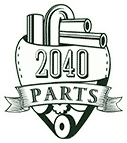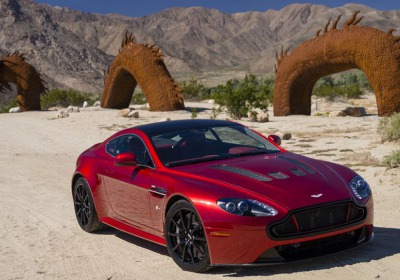2015 Aston Martin V12 Vantage S drive review
Mon, 14 Oct 2013
What is it?
The 2015 V12 Vantage S is the latest evolution of the sports car introduced in 2005, as the entry point to Aston Martin's lineup. It essentially melds the current, track-tuned V8 Vantage S with the range-topping V12 Vantage, which the V12 S replaces.
The V12 Vantage S takes a couple of pages from the V8 S playbook, but it's less overtly a track toy. It has a broader range of both comfort and performance, thanks partly to the first electronically controlled adaptive suspension offered in the Vantage line. Its biggest difference is wedged under the bonnet, and “wedged” is barely an overstatement.
This Vantage gets power from Aston Martin's latest V12, recently introduced in the larger Vanquish coupe. It uses the same 6.0-liter block as the previous generation, but some 75 percent of its internals are new, according to Aston engineers. Improvements include fully variable intake and exhaust valve timing, hollow camshafts, CNC machined combustion chambers, larger throttle bodies and a new Bosch engine-management system. Horsepower peaks at a smooth 565, and torque at 457 lb-ft -- up 45 hp and 37 lb-ft compared to the previous V12.
The transmission comes from the V8 S, with upgrades. Now called Sportshift III, this single-clutch, seven-speed automated manual is supplied by race-box builder Graziano, with new hydraulics and control electronics, faster shift speeds and a lighter case. Aston says it weighs 55 pounds less than the six-speed manual it replaces. It's connected to the V12 through with aluminum torque tube and a carbon-fiber drive shaft.
The split powertrain is tucked into the Vantage edition of Aston's flexible VH (for vertical-horizontal) frame. VH is a mix of extruded aluminum box sections, stamped floor pans and precision castings at key points like suspension attachments. The windshield header is a single aluminum casting, and the door frames are magnesium. Everything is hot- or cold-bonded, aerospace style, with minimal application of self-piercing rivets and no conventional structural welds. The Vantage body panels are a mix of composite, steel and aluminum.
The V12 S starts with softer springs than the V8 Vantage S, but its suspension gets a broader envelope thanks to the adaptive shocks. Borrowed from Aston's big cars, the adaptive suspension adjusts dampening in three stages. Normal, Sport and Track modes control rebound according to the driver's selected preference.
The steering rack, too, comes from the V8 S, dropping the ratio from 17:1 to 15:1. In the V12, however, the hydraulic assist is linked to the adaptive suspension, varying the required effort according to the suspension setting. Carbon-ceramic brakes come standard, and the rotors are huge: nearly 16 inches in front, with six-piston monoblock calipers, and 14.2 inches in the rear, with four pistons. The buyer can choose between standard Pirelli P Zeros or P Zero Corsas with race compound on 19-inch, 10-spoke graphite rims (255/35 front. 295/30 rear).
For $184,995 (or $195,941 in Canada), V12 Vantage S buyers will get some subtle styling distinctions -- starting with a black carbon fiber or titanium mesh grille, rather than Aston's familiar aluminum slats. The car will reach North America sometime after the new year, at which point the standard Vantage line will include the V8 (the last outpost of a conventional manual), the V8 S and the V12 S. In the interim, in some markets, the manual-equipped V12 Vantage roadster remains available.
How's it drive?
Magnificently, with one glaring exception. The V12 Vantage S is extreme in most respects, but not extremely difficult to live with. We'd call it supremely balanced -- in weight distribution, or grip front to rear, but also in the matched -- and extreme -- competency of its engine, chassis and brakes. The adaptive suspension gives it a much wider band of acceptable, road-going ride quality than the V8 S. It's generally more flexible, and sweet.
The V12 delivers some of the great satisfactions autodom can provide -- to the ears, the seat of the pants and the belly. We don't need no stinking turbos! The impeccably smooth scream of 565 hp near the 7,200-rpm redline defines automotive lust, and the torque band is broader than ever, thanks to the full-range VVT. There's more than enough grunt to deliver a head rush from virtually any speed -- or to make your passenger car sick with just aggressive jabs at the throttle in a straight line.
Steering is exceptionally communicative and linear. Tire angle remains consistent to the amount of steering-wheel input lock-to-lock. On a track, we'd guess the V12 Vantages S can push if you trail brake too hot into a corner, and loosen up in back if you go way, way overboard on the gas. Yet that's an extrapolation, to be sure, because our drive was limited to roads through the California desert. There is literally so much grip in the Corsas that it's impossible to sanely find the limits of adhesion on public roads. Over a few hundred miles, we managed to skip the front tires exactly once. We got the rear wheels to throttle back only through blown sand. And the ride quality was never unacceptable. No, this was not the upper Midwest, but in the stiffly sprung V8 Vantage S, these old bones would have been begging for relief.
The brakes deserve a special callout. They stop as surely and repeatedly as their size and a 3,670-pound curb weight might suggest, but the notable thing was the smoothness of the carbon-ceramic rotors. There was none of the chalkboard squeak or grating that not long ago defined their operation. They were almost indistinguishable from conventional cast iron.
The exception? Yes, the transmission. Aston says shift times have decreased by half with Sportshift III, to 80 milliseconds, and we couldn't care much less. Manual, full-throttle shift speed was never the problem, because manual shifting during really aggressive driving is about the only thing this transmission was good at. The problem? It's not far short of horrible as a full automatic on the road.
You can smooth casual upshifts now, maybe, if you let the gas pedal up, but then what's the point of not having a clutch pedal? Revs still drop substantially before every part-throttle shift -- so much that it almost feels like the Vantage is bogging. Gear changes slow acceleration while the car coasts and the transmission engages the next gear, and none of it is particularly smooth. For anything but truly spirited driving, the best answer might be choosing a single gear, letting the V12's wide torque band do the work, and shifting manually only when necessary. If you're playing at this table, you probably don't worry much about fuel mileage, anyway.
Frankly, Aston is backed into a corner here. The company wanted an automatic to extend the V12's appeal, but this one isn't likely to appeal to automatic buyers much. Most everyone would be better served by a conventional manual or a torque-convertor automatic. A dual-clutch would be smoother. The problem, Aston engineers admit, is that there just isn't enough real-estate in the aluminum Vantage VH frame to accommodate either a dual-clutch or a torque-convertor box in front of the rear axle. Vantage buyers who prefer automatic shifting will have to live with the Graziano single-clutch for the foreseeable future.
Do I want it?
After careful consideration, and more than a little waffling, we say you probably do.
The Vantage remains a gorgeous automobile -- classically beautiful and fresh at the same time, with an understated aggression that commands attention without screaming for it. Its interior is showing hints of age, but it remains sufficiently functional. Its finish out-charms most everything it competes against. Its quirks are more character shapers than annoyances.
Most significantly, the V12 will run with any sports car from Germany or Italy, and it will engage and satisfy at least as thoroughly. Thanks to its new adjustable suspension, the V12 Vantage S presents a broad range of appropriateness, delivering acceptable ride comfort on the road (certainly better than the V8 Vantage S) and suitable firmness for track work. Its V12 serves up automotive glory, and its chassis is more than up to the job. In short, there are few better road cars to go fast in.
Your passenger will probably be a lot more comfortable in a Porsche 911\, but tough for them. The waffling here comes down the transmission. Sportshift III is not really good at anything, except maybe shifting manually at full throttle near the redline. We'd easily recommend a conventional manual, but the V12 Vantage will no longer be offered with one. Giving up 145 hp for the standard V8 Vantage without Sportshift III -- that's the harder choice to make.
2015 Aston Martin V12 Vantage S
Base Price: $184,995
On Sale: First quarter 2014
Drivetrain: 6.0-liter V12
Output: 565 hp @ 6,750 rpm, 457 lb-ft @ 5,750 rpm; seven-speed single-clutch automated transmission
Curb Weight: 3,670 lb
0-60 mph: 3.6 sec (est)
Fuel economy (EPA City/Highway/Combined): 12/18/15 mpg
By J.P. Vettraino



